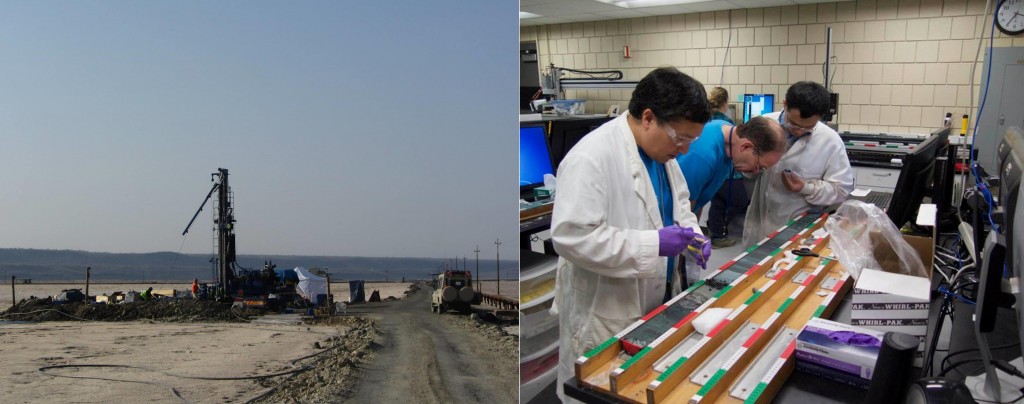Visualizing Human Origins on the interactWall
CURVE’s visualization technology is helping researchers take a closer look at our origins. In an effort to understand “local climate dynamics relevant to the time periods and the regions where human evolutionary change took place” researchers are studying core samples taken from East Africa. (human origins drilling project) These core samples are part of the Smithsonian Institution’s Human Origins Program. Dr. Dan Deocampo, Human Origins Program research team member and GSU Department of Geosciences Chair uses Corelyzer on the CURVE interactWall to analyze core samples.

Commenting on CURVE’s visualization system, Deocampo notes, “This technology allows us to closely examine the sediment in detail while keeping the larger context – we’re literally looking through a window at the earth’s history millions of years ago. This is helping us understand how changing climate affects the environment, ecosystems, and organisms in Africa and around the globe.”
With funding from the Smithsonian Institution Human Origins Program and the National Science Foundation, Dr. Deocampo’s GSU lab is responsible for mineral analysis using X-ray diffraction techniques for 5 of the 7 core sites – The Afar / Northern Awash (Ethiopia), Lake Turkana (Kenya), Lake Baringo/Tugen Hills (Kenya), Lake Magadi (Kenya), and Olorgesailie (Kenya).


Learn more about the Smithsonian’s Human Origins Program and the Hominin Sites and Paleolakes Drilling Project (HSPDP).